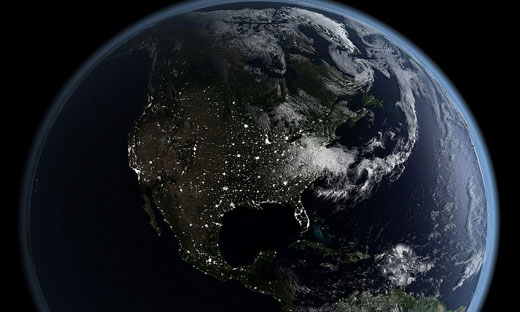
NASA officials last week talked about doomsday predictions resulting from certain interpretations of the Mayan calendar; a major cycle on that calendar will end Dec. 21 of this year.
Despite the assurances of experts in Maya science and history, that Mayans never saw this date as apocalyptic, many people apparently worry that a cosmic happening will end life on Earth later this month.
NASA takes on the doomsdayers and debunks their predictions on its 2012 information page.
One of the false ideas spread by those who believe in the arrival of the apocalypse this month is that a rogue planet will collide with Earth on the day of the Winter Solistice. NASA astronomers note that any planet slated to crash into Earth just before Christmas would, by now, be a big bright object in the sky.
“There is no true issue here,” David Morrison, an astrobiologist at NASA’s Ames Research Center, said during a NASA Google Hangout event Nov. 28. “This is just a manufactured fantasy.”
NASA officials, however, are concerned that the apocalyptic predictions have gotten out of hand and have resulted in causing some actual problems. The space agency has received many letters and emails from frightened people. Morrison said, adding that many of the worried are young people, including children, and that some have said they are too worried to even sleep or eat. Some, he said, are even suicidal.
“While this is a joke to some people and a mystery to others, there is a core of people who are truly concerned,” he said.
While some of the doomsdayers say the end will come when the Earth is hit by a rogue planet, others say it is solar flares that will do us in.
NASA took questions from the public last Wednesday in the hour-long video chat, with Lika Guhathakurta, a heliophysicist, discussing the solar flares.
The scientists said that large solar flares could affect electronics and navigation systems with increased electromagnetic activity hitting our atmosphere. Guhathakurta noted, however, that the current period of active solar flares that we are in is actually a “wimpy” one and that the expectation is for no solar storms stronger than ones Earth has already experienced in the past.
With rogue planets and solar flares ruled out as the cause of the apocalpyse that still leaves, according to some doomsdayers, the possibility of being hit by an asteroid.
The closest asteroid will not pass until Feb. 13, 2013 and will come pretty close, missing us by just 25,000 miles. Although that’s pretty close, NASA scientists say the asteroid will not hit the earth.
They also dismiss other equally absurd doomsday ideas for Dec. 21 – that the Earth’s magnetic field will suddenly reverse on that day, tossing us all into outer space, or that the planet will somehow travel 30,000 light years and fall into the black hole at the center of the Milky Way Galaxy.
The scientists offered no response to one doomsday idea – the prediction that we will undergo a complete blackout from Dec. 23 to Dec. 25. They had not heard that prediction, they said.
The scientists agreed that worry about end of life on the planet would better be focused on things like climate change. “The greatest threat to Earth in 2012, at the end of this year and in the future is just from the human race itself,” said Mitzi Adams, a heliophysicist at NASA’s Marshall Space Flight Center.
Photo: Kevin M. Gill/Flickr










